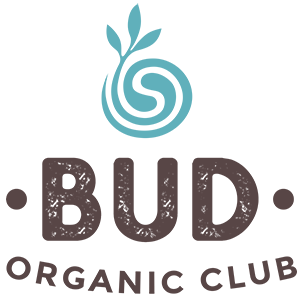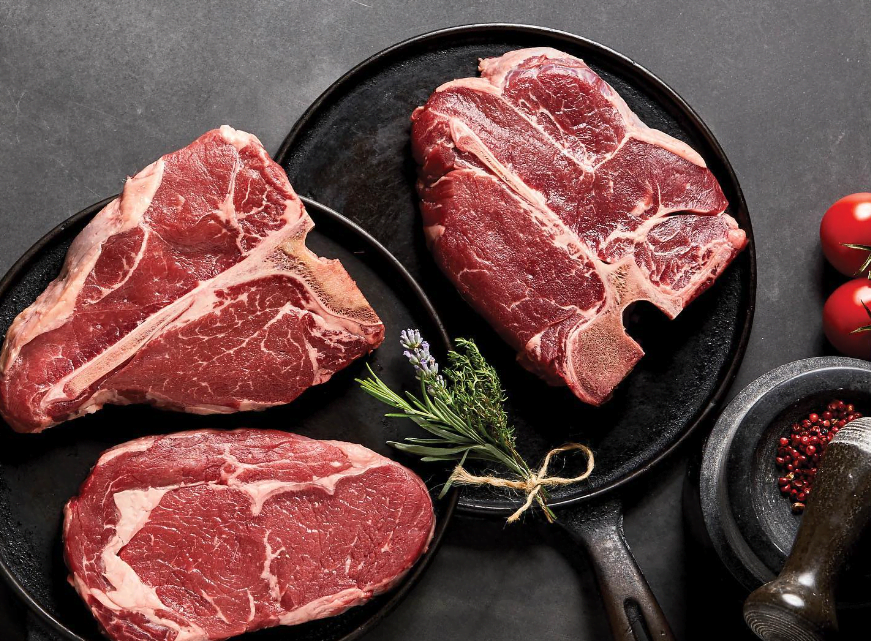When it comes to the red meat section of the supermarket, there are many options available. What is organic red meat, how is it different and why should you consider it? Let’s take a quick dive into the world of organic red meat and discover its benefits for animal welfare, the environment and your family’s health.
Organic red meat is derived from animals that were raised according to stringent organic standards. These strict standards govern the entire process, from the animals’ diet and living conditions to the absence of synthetic hormones and chemicals. Cattle feedlots are prohibited in certified organic production. Certified organic livestock have open access to healthy pasture for grazing and are fed only organic feed. The land on which organic livestock graze must also be free of any toxic and persistent pesticides, synthetic fertilisers, and GMOs.
Not all meat is equal
How livestock are raised has an impact on their nutritional value to humans. Because organic livestock are pasture-raised, allowed to graze naturally, and do not consume the typical high calorie, grain-based diet, organic red meat has healthier fatty acid profiles[1] and higher amounts of health-promoting phytonutrients[2] compared to conventionally raised grain-fed meat. These contribute to improved heart health, brain function, and overall well-being. There’s also a distinct and special flavour profile that can only come from free-roaming animals fed on a natural diet.
Another main advantage is that it is free from synthetic chemicals and hormones. Conventionally raised livestock are pumped with hormones and antibiotics, the residues of which may be ingested by consumers. Choosing organic means you can get the nutritional benefits of meat without exposing your family to chemical contaminants. No hidden nasties!
Support animal welfare
Organic farming places strong emphasis on animal welfare, ensuring they are raised in humane and ethical conditions. The animals roam free. They have access to open pasture for grazing and are not confined in cramped spaces. They are allowed to express their natural behaviours and given the time to grow at their natural rate. They experience a much higher quality of life compared to non-organic animals that spend half or more of their lifetimes in a feedlot. By choosing organic, you are supporting a system that values the humane treatment of animals and contributing to a more compassionate and sustainable food system.

Support the environment
Did you know at least 5% of organic farmland is designated nature area to encourage biodiversity? Organic meat production emphasises soil health and water conservation. The absence of synthetic pesticides and fertilisers helps protect our water resources and reduces chemical runoffs, preserving water quality. Rotational grazing reduces erosion and promotes regrowth. Organic farms become a sanctuary for a lot of animal and plant species, promoting biodiversity. By choosing organic red meat, you actively contribute to a healthier and more sustainable food system for your loved ones.
The price difference
While organic meat may come at a slightly higher price versus non-organic options, keep in mind that its many benefits may make it a worthwhile investment. The added cost only reflects the higher standards of animal welfare, strict adherence to sustainable farming practices, and the absence of synthetic chemicals. For example, organically raised animals are allowed to live and grow naturally, without any growth-promoting chemicals. This means that the animal is older upon slaughter and therefore has a slightly higher cost of production.
For cost efficiency, you can consider buying direct from farmers or buying in bulk and batch-cooking. You may also opt for leaner cuts that are more affordable yet as nutritionally dense. Exploring less popular cuts of meat is yet another strategy for enjoying the benefits of organic red meat without breaking the bank.
Conclusion
Choosing organic red meat is a win-win situation. Not only does it provide you and your family with health benefits, but it also supports animal welfare and promotes a sustainable food system. While there may be a slight price difference, the many benefits make it a worthwhile investment in your health, animal welfare, and the planet. So the next time you’re shopping for meat, consider going organic for a truly wholesome and conscientious choice. Don’t forget to look for a certified organic label such as the Bud logo to ensure that it has met strict organic standards and is authentically 100% certified organic.
List of References
[1] Available at: https://www.ncbi.nlm.nih.gov/pmc/articles/PMC4838835/
[2] Available at: https://www.frontiersin.org/articles/10.3389/fsufs.2020.555426/full
Organic Red Meat Glossary
Feedlot: Yarded areas used in non-organic farming where cattle are brought up to slaughter weight on a grain-based ration.
Phytonutrients: Natural beneficial compounds found in plant foods, such as fruit, vegetables and wholegrains.
Rotational grazing: The practice of rotating livestock through a series of paddocks, to support sufficient pasture growth.

